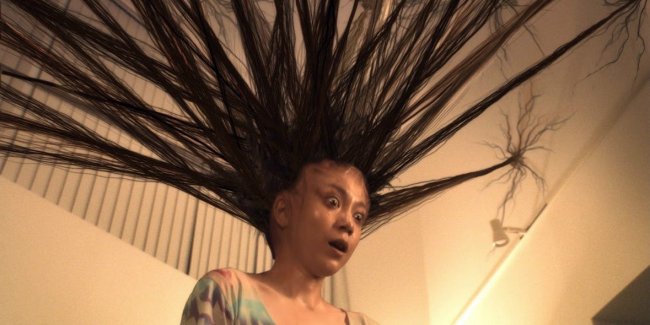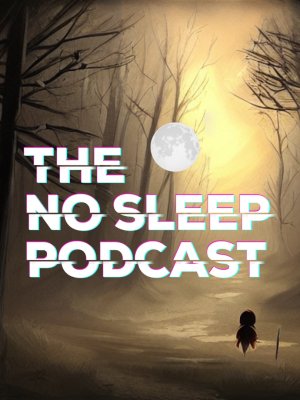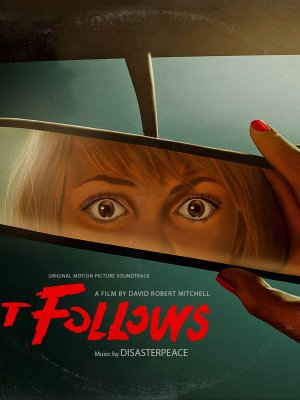10 Japanese Creepy Horror Movies (Must Watch)
Some of the best horror films in the world have only come out of Japan. Let's take a look at some of the most memorable Japanese horror movies.
10. DARK WATER
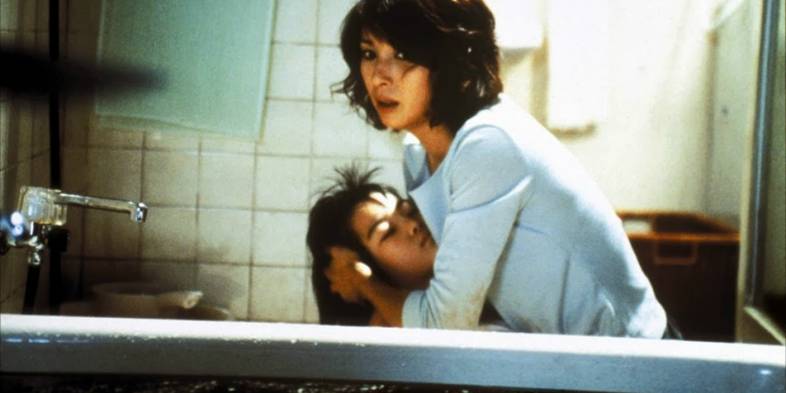
Dark Water is a 2002 horror-drama from director Hideo Nakata. The film is based on a piece of work by Koji Suzuki. The film was remade for Western audiences in 2005. directed by Walter Salles and starring Jennifer Connelly.
In Dark Water, Yoshimi (Hitomi Kuroki) is in the middle of an ugly divorce and has to move into a dilapidated apartment with her daughter. A leak forms in the building’s ceiling and gets worse every day. Despite complaining to the building’s janitor, the leak isn’t fixed. When Yoshimi goes to the apartment above hers to take care of the problem herself, she discovers the apartment is locked. From then on, strange things begin to happen. A red bag and stuffed bunny appear every day by her door, no matter how many times she gets rid of them. Hair starts to appear in her tap water and Yoshimi starts seeing a strange girl. When her daughter goes missing, things go from creepy to downright terrifying.
This J-Horror film that did fairly well in theaters, but remains very underrated to to this day.
9. ICHI THE KILLER
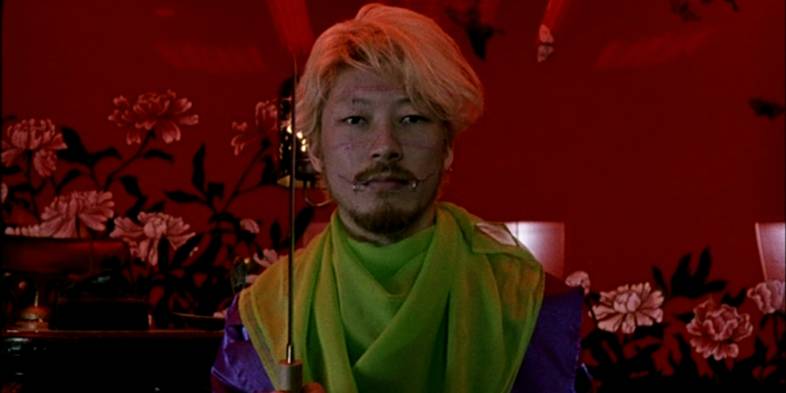
Ichi the Killer is a 2001 crime horror film directed by Takashi Miike and based on the manga series by Hideo Yamamoto. The film tells the story of opposing yakuza gangs and a murderous scarred man named Ichi, who is used as a killing dog between the gangs.
The film can be difficult to watch, with its graphic scenes of cruelty and intense violence, but Ichi the Killer has become a cult classic in Japanese horror and one of the most recognizable entries on this list. Despite its graphic nature, the film is far from vapid and pointless. The themes of the film are what give it its charm– more or less, Ichi the Killer is a very well-done and artistic assessment of violence, responsibility, and the media.
The film takes a critical stance on how violent imagery is consumed in modern times without making the filmmakers’ own moral stances known. Its makes the viewer question their own attitude toward voyeurism and violence, and its a shame that the film’s release was met with aggressive attempts to censor it. By censoring it, the point of the film is lost.
8. SUICIDE CIRCLE / SUICIDE CLUB
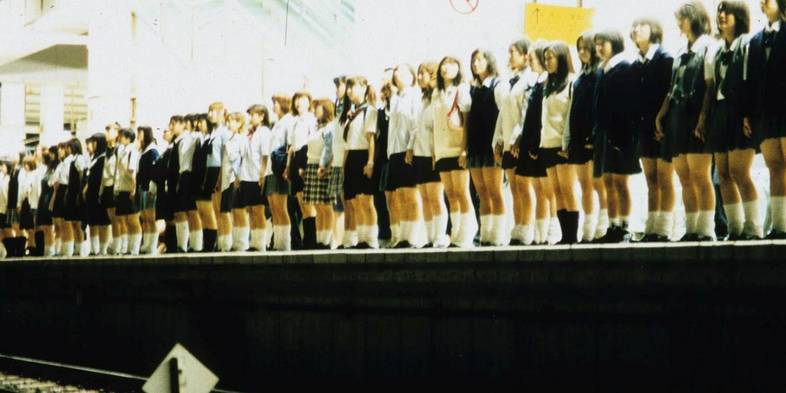
Suicide Circle (known as Suicide Club outside of Japan) is a 2001 indie horror film that was written and directed by Sion Sono. The film explores a pandemic of suicides that suddenly occur across Japan and the detective, named Kuroda (Ryo Ishibashi), who seeks to unravel the mystery behind them. The film has gained fame for its exceptionally gory presentation and very controversial themes.
The film opens up with a performance from a fictional idol pop group called Dessart and a mass 54-person suicide committed by teen schoolgirls who jump in front of an oncoming train. The scene is one of many gruesome scenes in the film, and one the most iconic in the Japanese horror genre.
Suicide Circle is a great film for its complex plot and symbolic themes. The film has been interpreted and reinterpreted by fans around the globe for years. It is likely that the film is a surreal exploration of how fads can influence the actions of people.
7. AUDITION
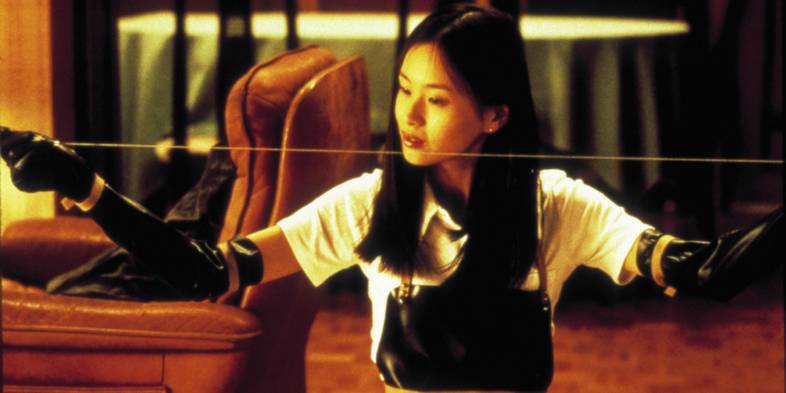
Audition is a 1999 horror film directed by Takashi Miike and based on a novel by Ryu Murakami. The film follows widower Shigharu (Ryo Ishibashi), who finds himself lonely since the death of his wife. After his son suggests he find a new love, Shigharu agrees and stages a fake acting audition with the help of his friend in order to find a new wife. Upon meeting the beautiful and mysterious Asami, Shigharu is lovestruck, and Asami seems interested as well. However, it turns out it’s not his love she’s interested in.
Audition has some pretty good storytelling and a slow burning plot, but what makes this film worthy of this list is one scene in particular. Those who have seen the film are probably already cringing in discomfort. The scene is devastatingly gruesome. Critics have claimed that Audition as a whole is an authentically disturbing, but many were tempted to quit watching during the last thirty minutes of the film. Thinking about giving it a shot? Don’t do so on a full stomach.
6. EXTE
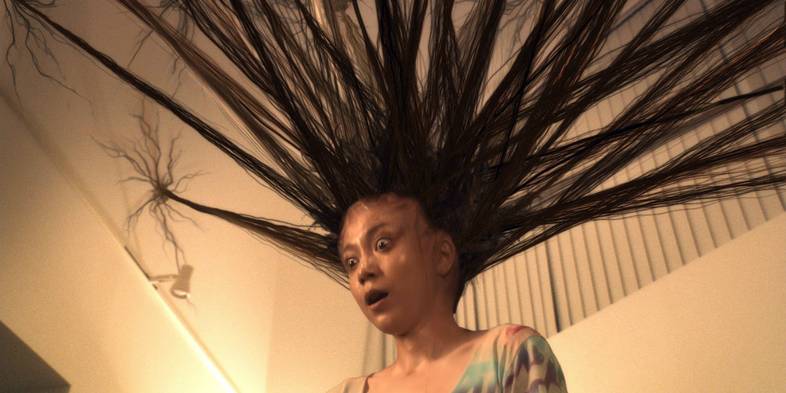
Exte is a 2007 horror film directed and written by Sion Sono of Suicide Circle fame. The plot of the film follows a wannabe hairdresser who is stalked by a hair fetishist who sells hair extensions to salons. The hair comes from a pretty gruesome and mysterious source– the dead body of a girl who doesn’t seem to decompose and whose hair continues to grow and come alive. Those who wear extensions produced by this ghostly girl go insane or are killed.
The film’s opening is especially gruesome– customs agents discover a shipping container full of human hair with a young girl’s bald dead body within the pile of follicles. The autopsy on the girl’s body results in the revelation that the girl’s internal organs have been completely harvested as a victim of black market human organ racketeering. Our creepy trichophile is a morgue watchman where the body is located, and we learn the origins of his sick prized possession.
While the film follows typical “wronged girl’s grudge” tropes that are common in Japanese horror cinema, Exte is the perfect combination of creepy, dark, and vengeful.
5. PULSE
After college student Taguchi (Kenji Mizuhashi) commits suicide, a number of young adults living in Tokyo witness terrifying visions transferred across the Internet.
As more people disappear throughout the city, the Internet becomes a breeding ground for malevolent spirits. Three seemingly disconnected stories follow Michi (Kumiko Aso),
Ryosuke (Haruhiko Katô) and Harue (Koyuki) as they attempt to solve the mystery behind the ghostly visions that are seeping beyond their computer monitors.
4. JU-ON: THE GRUDGE
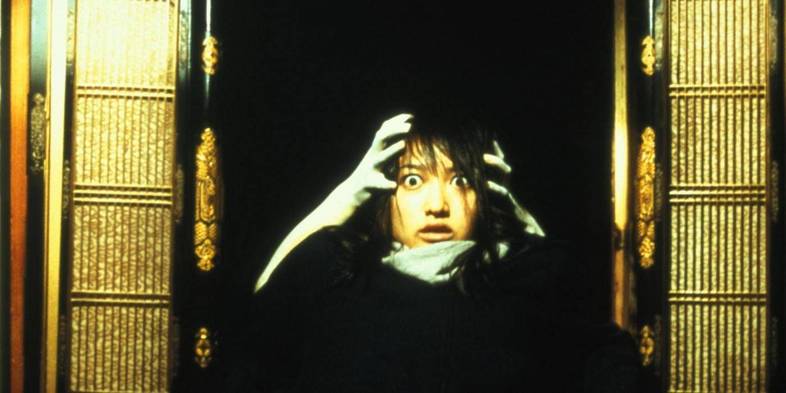
The 2002 supernatural horror film Ju-on: The Grudge was directed by Takashi Shimizu. The film was actually the third installment of the Ju-on series but was the first to be theatrically released. Like Ringu, Ju-on: The Grudge had an American remake called The Grudge in 2004, but the Westernized version was also directed by Takashi Shimizu. Luckily, the remake maintained Shimizu’s taste in directing and was a major success.
In Ju-On: The Grudge, a grisly murder left its mark on a house in Tokyo long after the deadly events took place. When a new family moves in, they find themselves emotionally influenced and possessed by the strong emotions and spirits left behind in the home.
Ju-On: The Grudge earns a spot in this list for its well-done elements of storytelling and unique ghost story. The scene where Kayako’s ghost crawls in a bone-cracking manner down the stairs while emitting a terrifying death rattle has become an iconic image in Japanese horror. The thought of inadvertently touching a cursed space whose darkness will follow you even if you leave is definitely terrifying.
3. RINGU
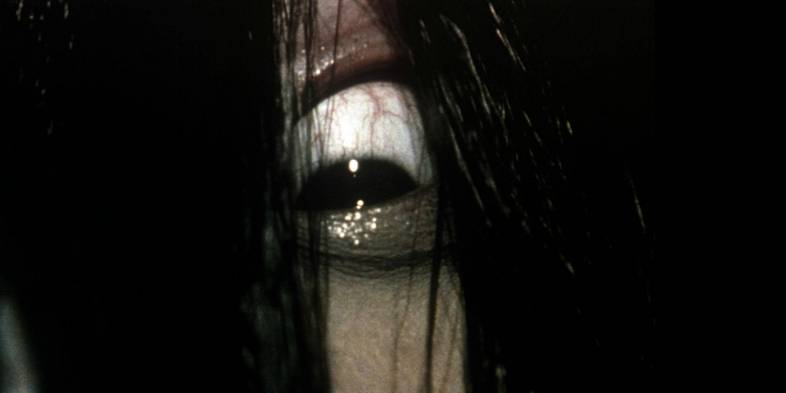
Ringu is a 1998 psychological horror film directed by Hideo Nakata. Most people knowthe long-haired, creepy curse-caster Sadako by her westernized name, Samara, from the 2002 English-language remake of the film. The remake deviated a little but from the original, but not much.
It follows the story of television reporter and single mother Reiko (Nanako Matsushima) who becomes entangled in a seemingly inescapable curse that will be your demise about seven days after watching the curse’s origin– a VHS tape. Like the remake, the film opens up with two teen girls talking about a cursed videotape after one of them reveals that they’ve seen it, and the opening goes about as badly as you’d expect.
Ringu was a fascinating film because it used the creepy little girl trope in a way that made it unique. There’s something very terrifying about being cursed by the simple act of watching something, especially when you know how little time you have to break that curse. Anxiety attack, anyone?
2. MAREBITO
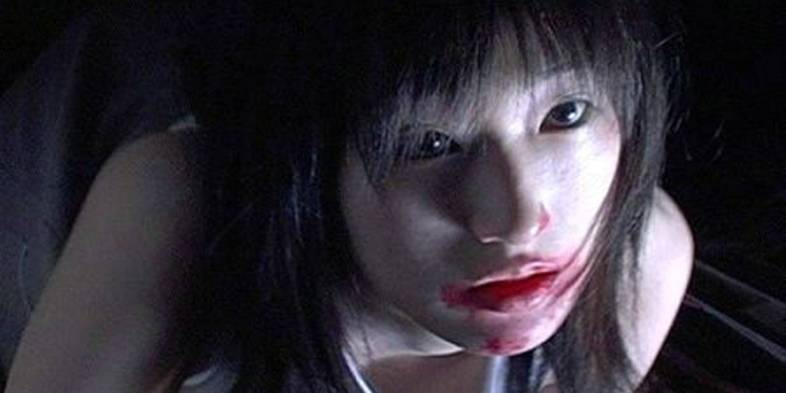
Marebito is a 2004 horror film directed by Takashi Shimizu. The film follows a voyeuristic man named Masuoka (Shinya Tsukamoto) who becomes obsessed with videotaping fear after he sees a terrified man commit suicide by stabbing himself in the eye. Eventually, he discovers what appears to be an alternate dimension beneath Tokyo. He finds a naked woman chained to a cave there, and takes her back to his apartment. She cannot eat, drink, or speak, but one thing is for certain– whatever she is, she wants blood.
The film is fascinating not only for its horror elements, but for its fantasy elements as well. The earliest scene of Masuoka crossing into a mountain range in an alternate dimension through the hidden underground tunnels beneath the Tokyo subway lines is something rarely seen in other horror films. The film has a mysterious ethos reminiscent of something from H.P. Lovecraft. Many attempts to explain the film include speculation that Masuoka is actually insane, that the characters and worlds he encounters actually just represent human ideas, or that F is actually his daughter. Marebito doesn’t offer an explanation.
1. NOROI
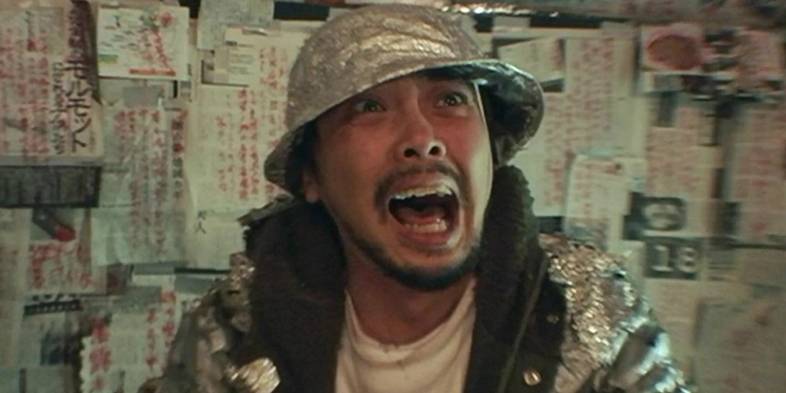
The 2005 found footage horror film Noroi (literally “The Curse”) is a mockumentary-style horror film that is far from the typical Western execution of this trope. The film was directed by Koji Shiraishi.
The film focuses on a paranormal investigator named Masafumi, who has become famous for his media work on the supernatural. While making his last documentary about a mysterious curse, Masafumi is reported missing and his house is burnt down with his wife’s remains inside. What follows is the footage Masafumi left behind. It starts off with Musafumi investigating a disturbed woman named Junko’s home, which is abandoned and full of dead pigeons. As the mystery is unravels, a malevolent supernatural entity is discovered to be causing a series of terrifying events that Masafumi gets wrapped up in.
Noroi is notable for its unusually long and intricate runtime, something not common in the Japanese horror genre. This departure from the norm and its interesting, spooky plot make Noroi worth watching.


